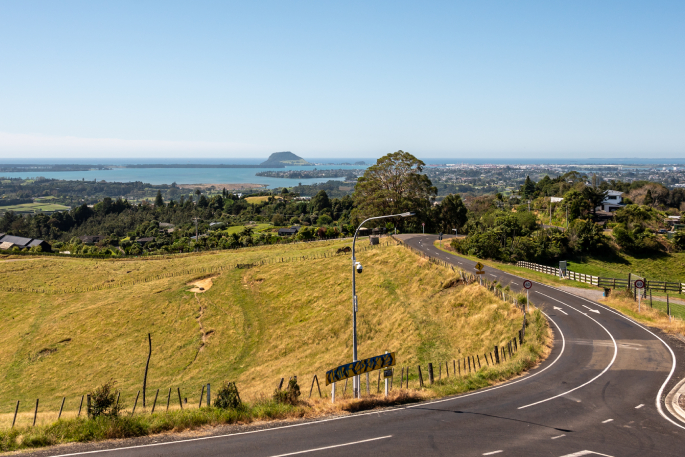Whether you’re someone who drives, walks, cycles, or takes the bus – everyone is encouraged to have a say in the future of the Bay of Plenty’s land transport network in the current submission process.
The Draft Regional Land Transport Plan 2024-2034, Te Mahere tūnuku ā-papa ā-rohe, is now open for consultation, outlining the future direction of the BOP’s transport system.
BOP Regional Transport Committee chair Lyall Thurston says: “We’re at a crossroads, and the paths we choose now will define the landscape of our daily lives, our environment, and our future generations.
“This plan is more than a document; it’s a blueprint for a connected, resilient, and vibrant BOP.
"Whether it’s a smoother commute, the pride in our green initiatives, or the reassurance of safe roads for our kids – we’re crafting a legacy together.”
The draft plan has been prepared by the Bay of Plenty Regional Transport Committee and sets out the priorities and activities the region will work towards in the next decade while maintaining a long-term view on what might happen in future.
It prioritises tackling traffic congestion, supporting public transport connections to affordable housing, addressing transport access for smaller and isolated communities, enhancing road safety and improving the resilience of the transport network against climate change.
Key proposed activities
Key proposed activities in Tauranga/Western Bay of Plenty include the following.
A State Highway 29A package of works, including Stage 3 PT corridor - $53.4 million; Stage 2 Omanawa Bridge - $66.5 million; access to Tauriko West and industrial estate - $123.2 million; and a proposed acceleration of SH29 Stage 4.
Connecting Mount Maunganui – improvements to network along Hewletts Rd and broader Mount Maunganui area, including Port of Tauranga - $55.27 million; Takitimu North Link Stage 1 (NZUP) - $695.98 million; Takitimu North Link Stage 2 (NZUP) - $ amount to be confirmed; Cameron Rd Multi-Modal Stage 2 - $120.4 million; Public Transport Services and Infrastructure Business Case - $1.1 million; and Ōmokoroa transport improvements – urbanisation of local roads to support planned land use changes - $26 million.
Region-wide
Rotorua and Eastern BOP will have their own key proposed activities – and there are some region-wide proposals too.
These include implementation of a National Ticketing Solution to enable standardised payment for public transport – $3 million; and improvements to transition to zero-emission public transport - $53.9 million.
“This isn’t a guaranteed programme – it is our combined ‘what we need to do’ list with the final say on how funds are allocated determined by the NZ Transport Agency Waka Kotahi,” says Lyall.
A full prioritised list of projects is available in the Draft Regional Land Transport Plan 2024-2034.
The plan is the way the BOP region seeks central government funding for transport activities and is a requirement under the Land Transport Management Act 2003.
“Reviewing the Regional Land Transport Plan is a dynamic process that balances technical expertise with community values. We’re committed to transparency and engagement, ensuring that the voices of our residents guide the development and prioritisation of projects critical to our region's growth and sustainability,” says BOPRC transport planning manager Oliver Haycock.
Make a submission
The Draft Regional Land Transport Plan 2024-2034 is open for consultation until Sunday, March 24.
To download a copy of the draft plan, and make a submission, visit: participate.boprc.govt.nz/rltp.
Funding decisions will be published by NZ Transport Agency Waka Kotahi in the National Land Transport Programme in September 2024.



2 comments
Have your say
Posted on 01-03-2024 12:48 | By an_alias
Well do what we want anyway
Not in our life time
Posted on 01-03-2024 15:18 | By Kancho
Seems that its many years and little funding that we can't afford without huge hikes in costs in rates and taxes. Our grandchildren will still be paying so hope that get to enjoy it
Leave a Comment
You must be logged in to make a comment.